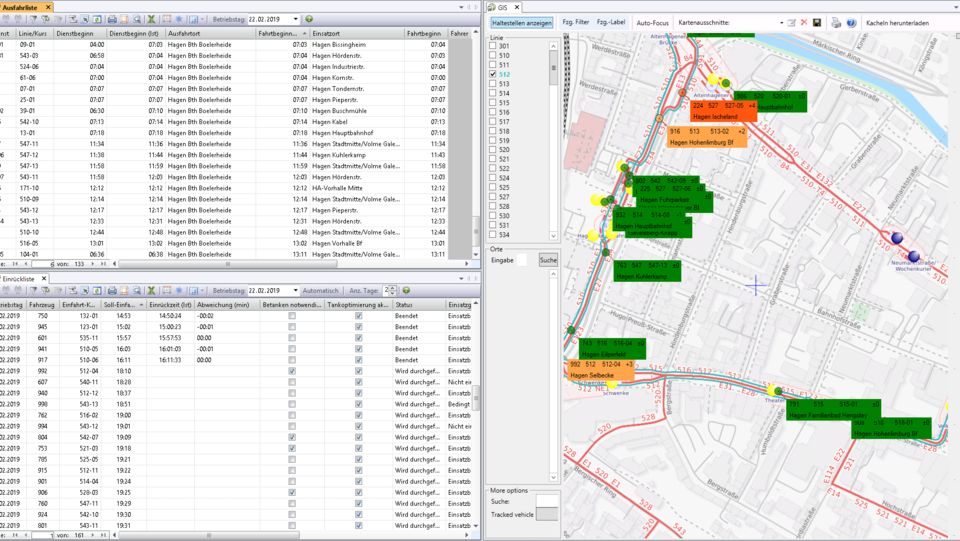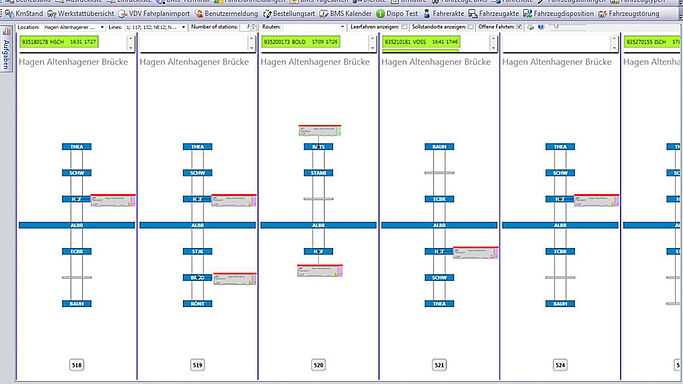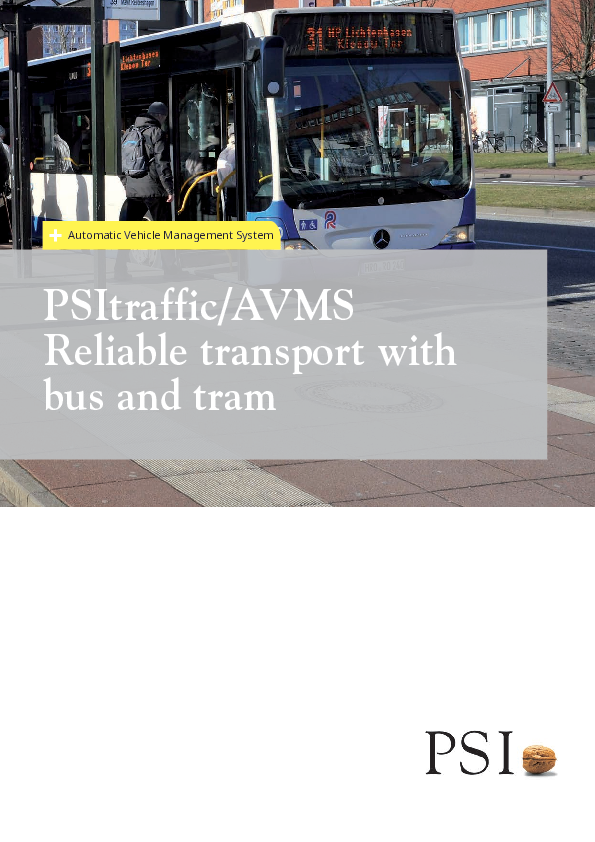![[Translate to English:] PSItraffic/ITCS](/fileadmin/_processed_/6/3/csm_20200214_GVB-EBS2.1_Screenshot_Linienband_GIS_k_776649a581.png)
The PSItraffic Intermodal Transport Control System (ITCS) is a building block for controlling daily operations in public transport. The system tracks the locations of all vehicles, compares them with the planned data and provides dispatchers with a complete overview of the operational processes.
Optimize passenger satisfaction in public transport
When is the next bus or streetcar coming? Will I make my connection? What is the quickest way to get to my destination? Bus and train passengers ask themselves these questions and more every day. Above all, they want to reach their destination on time and be informed quickly and reliably in the event of delays. Transport companies can only meet these challenges with modern IT systems.
The control system in use
Ensuring competitiveness
Using digital maps and graphical views, they can quickly get an idea of the situation and make the right decisions in the event of disruptions. Real-time data provides passengers with up-to-date information about their connections in the vehicles, at stops or via mobile devices. PSItraffic/ITCS ensures smooth and punctual operation - an important prerequisite for satisfied passengers and maintaining your competitiveness.
Benefits at a glance

-
Bus and streetcar transportation Optimal planning, control and monitoring.
-
Monitoring of standard operation Positioning via GPS, GLONASS or Galileo - your buses and streetcars know where they are at all times and report this to the control center.
-
Efficient action in the event of disruptions Integrated fault and detour management enables regular operations to be restored quickly.
-
Real-time passenger information PSItraffic/ITCS provides real-time passenger information - on displays and acoustically, in vehicles, at stops and on mobile devices.
-
Ticket printer and on-board computer We work together with competent partners to select on-board computers and ticket printers and to install the technology in your vehicles.
-
Integrated quality management system (business intelligence) PSItraffic/ITCS bundles historical operating data, evaluates it graphically and creates management reports.
-
Connection safety device The system checks in real time whether transfer connections can be maintained. If this is not the case, the dispatcher is alerted and can act accordingly. Drivers and passengers are informed.
Modules

Simple operability
Even complex processes must remain easy to use. This is why the design and usability of the interfaces and dialogs represent a particular challenge for us. The constant exchange with you forms the basis for the necessary adaptations and further developments.
-
Clearly structured menu structure
-
Graphical and tabular views
-
Individual customization of the views
-
Comprehensive navigation functions

Integration and openness
Our many years of experience in interface development form the basis for a future-proof IT infrastructure. The use of standard interfaces or the creation of new standards make data exchange with existing IT systems secure and stable.
-
Standard interfaces for scheduling and duty planning, personnel scheduling and other ITC systems
-
Ticket printer/board computer
-
Scoreboard, web information
-
Depot management system
-
Quality management system
Typical users

Operations manager
PSItraffic provides operations management with a transparent overview of all operational processes. The system supports the management of disruptions and thus enables maximum availability for passengers.
-
Ensure availability
Ensuring all processes in regular operation
-
Reducing operating costs
Monitoring operating costs and reducing costs with AI decision support
-
Increase in satisfaction
Increase in employee and customer satisfaction through the use of the software
References
FAQ´s
How does PSItraffic/ITCS increase passenger satisfaction?
The passenger satisfaction of your company can be optimized through the use of PSItraffic/TICS, as passenger information and evaluations can be displayed and retrieved in real time. The data from the system serves as the basis for displaying dynamic passenger information in the vehicles, at stops and online. It also forms the basis for creating statistical evaluations and reports.
Is the system cloud-enabled and what are the advantages?
Yes, the system is cloud-capable. In addition to the cost savings due to the elimination of acquisition and maintenance costs for hardware, scalability is also a key factor. The client systems and, above all, the interfaces used by the dispatchers run independently of the backend and on any environment, from desktop PCs and virtualizations to smartphone apps. The backend system, consisting of databases and application servers, runs independently in the cloud.
What interfaces are used?
Efficient data transfer between existing IT infrastructures is ensured by implementing established interfaces or developing innovative standard protocols.This promotes both the reliability and security of information exchange. The system uses standard interfaces such as VDV-452.




